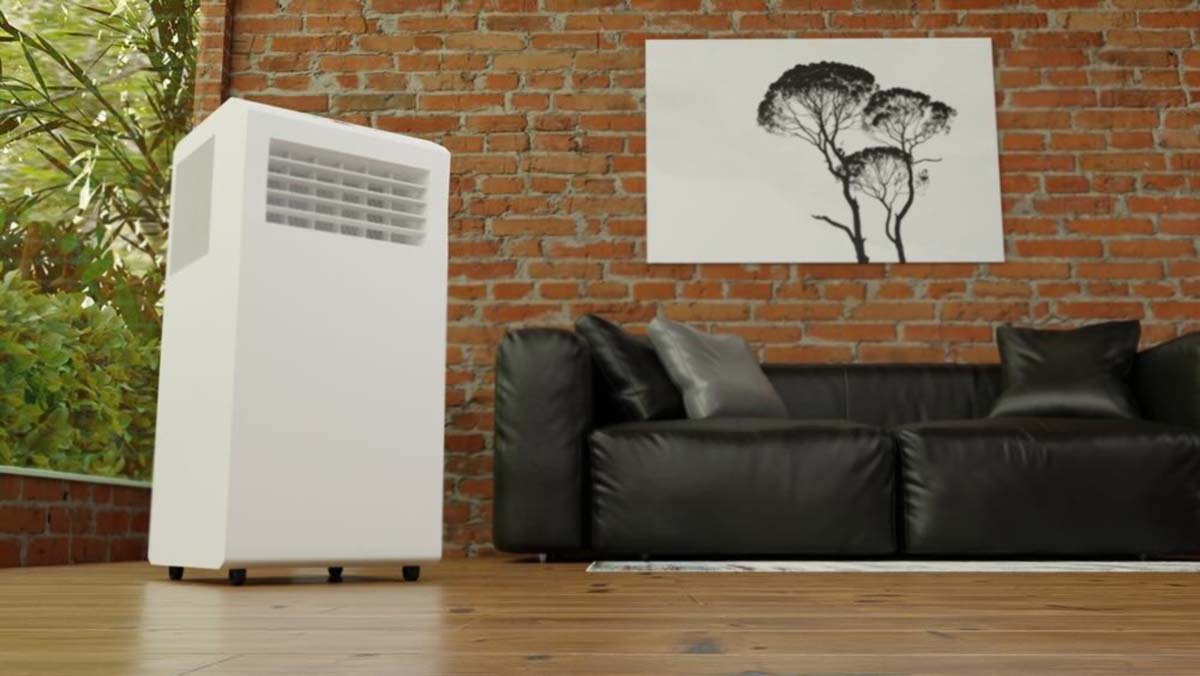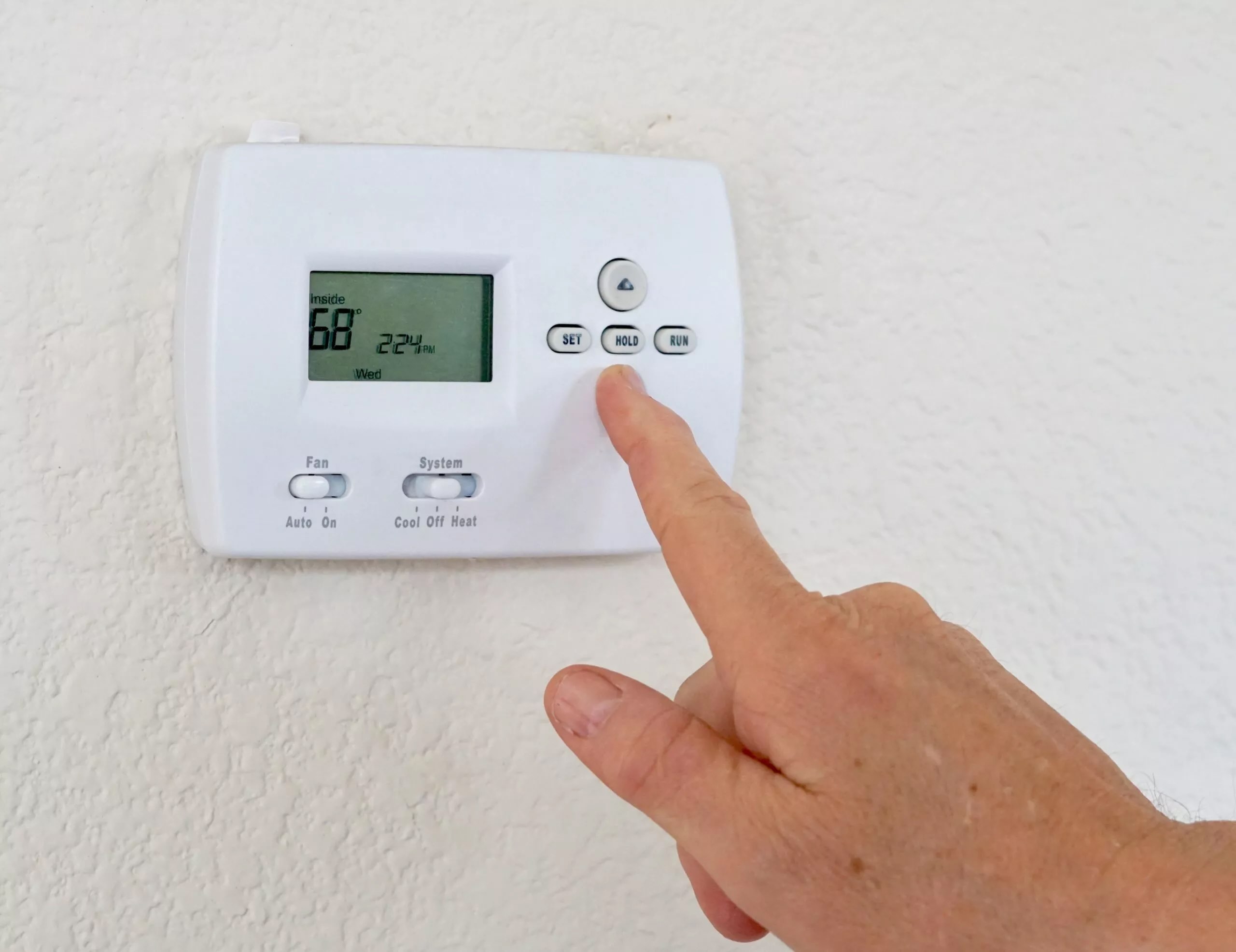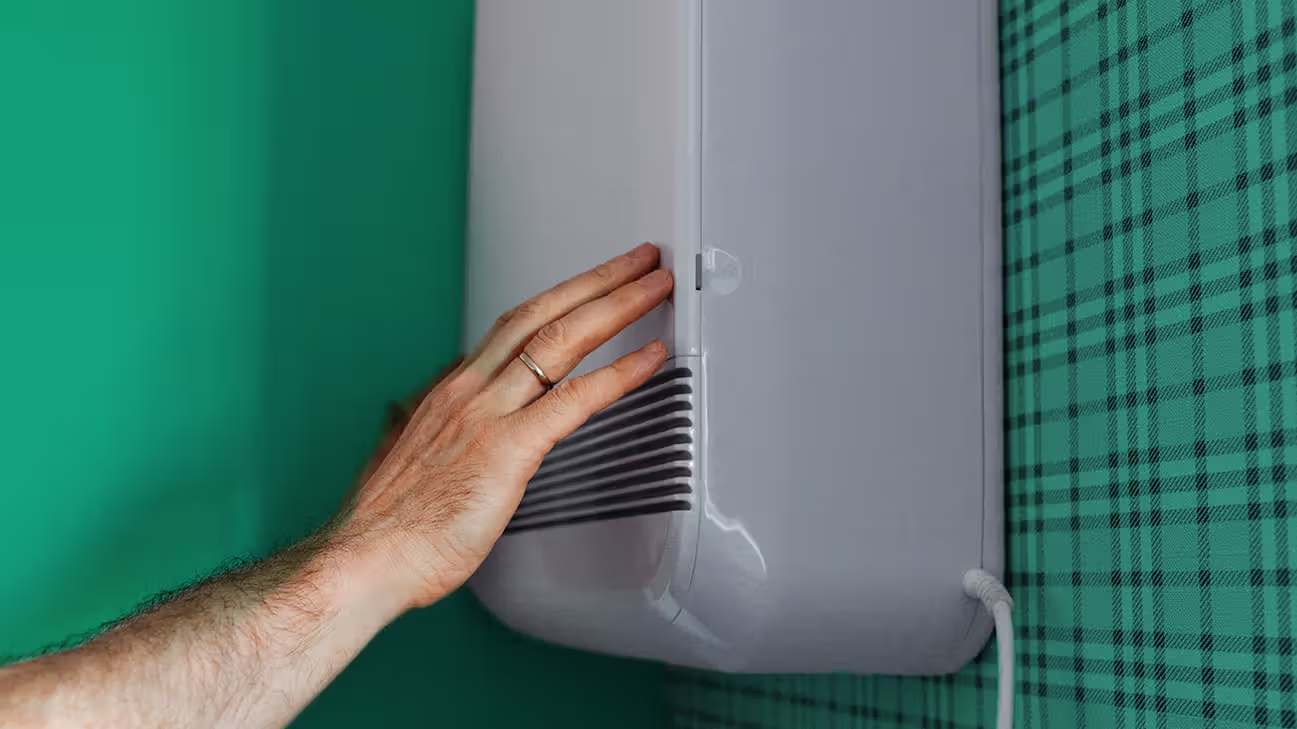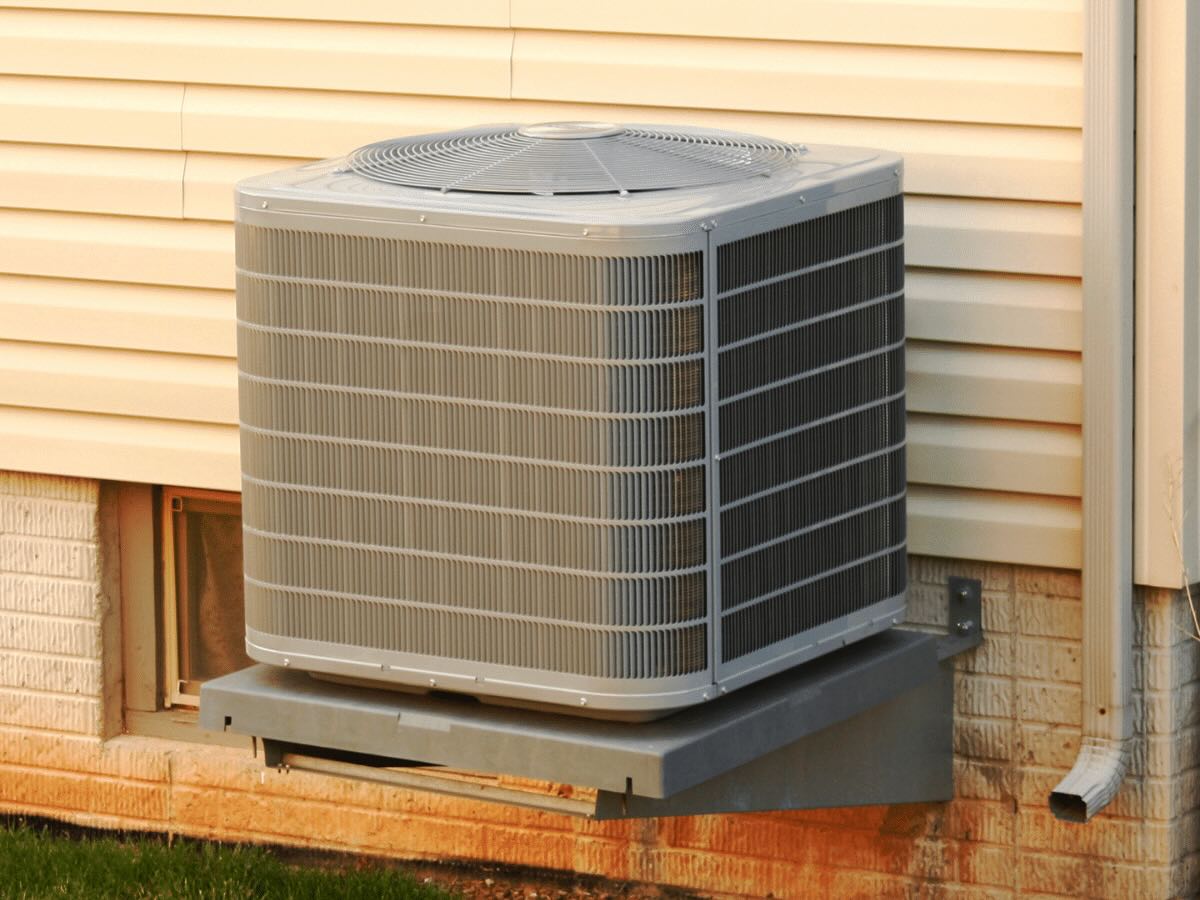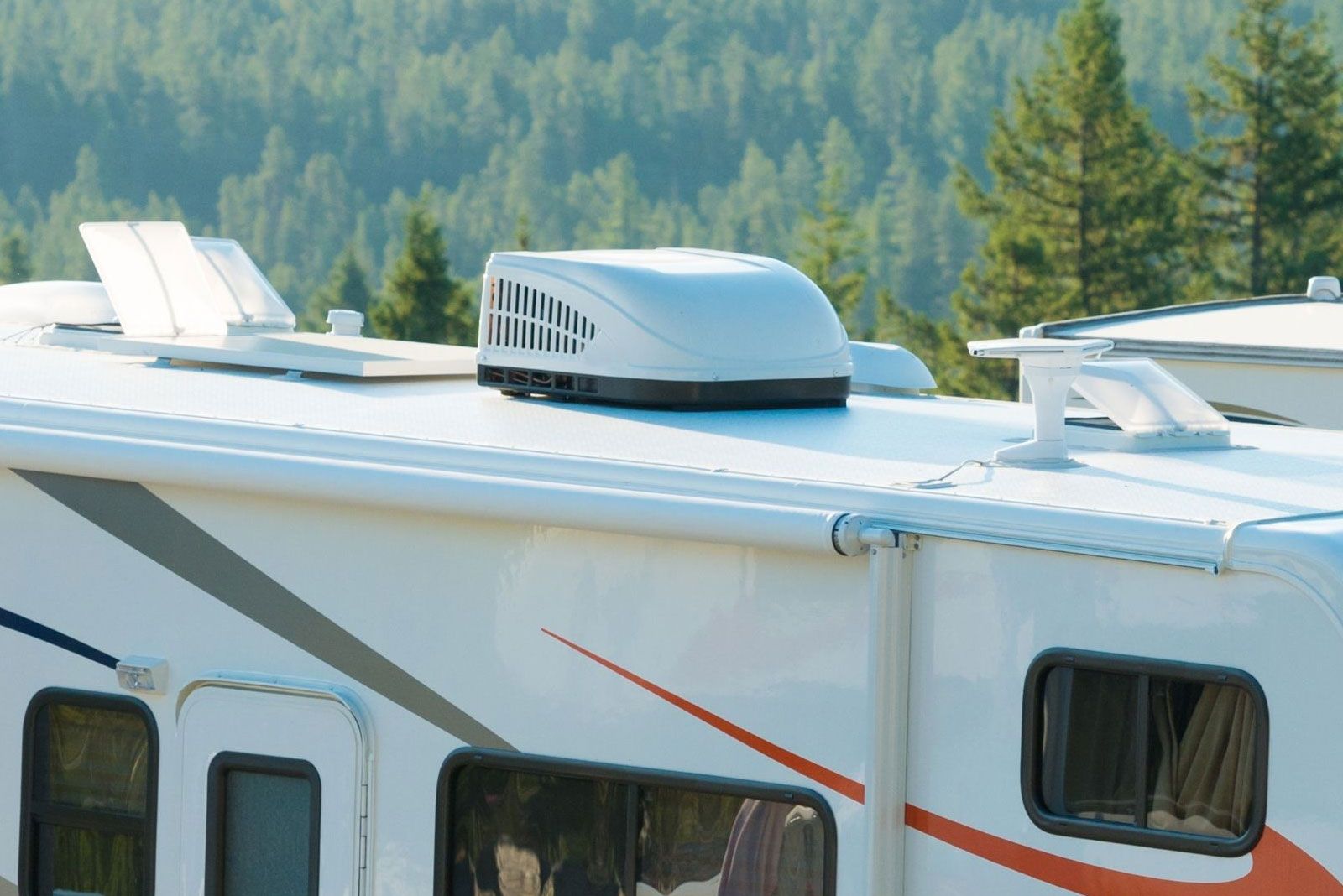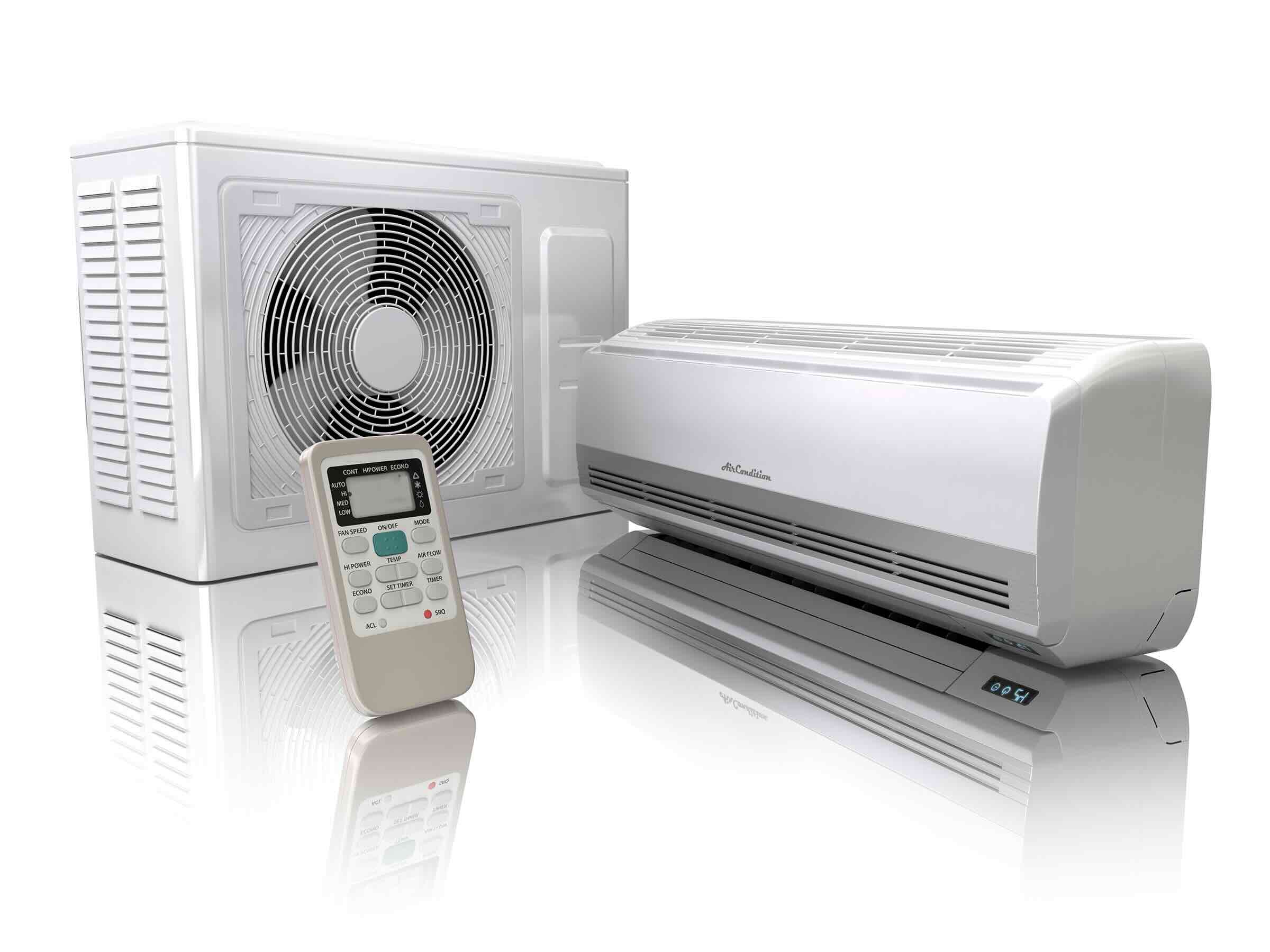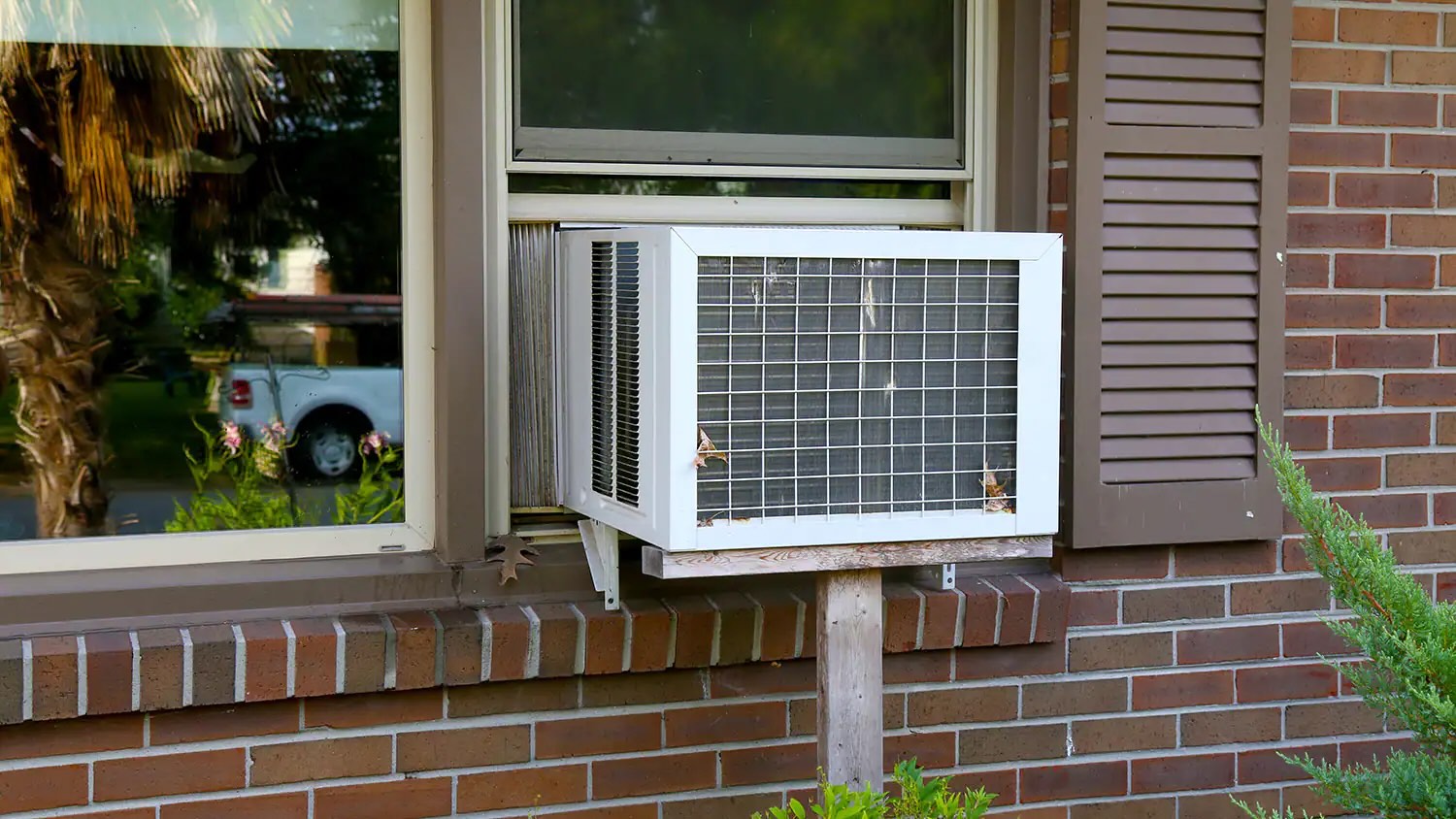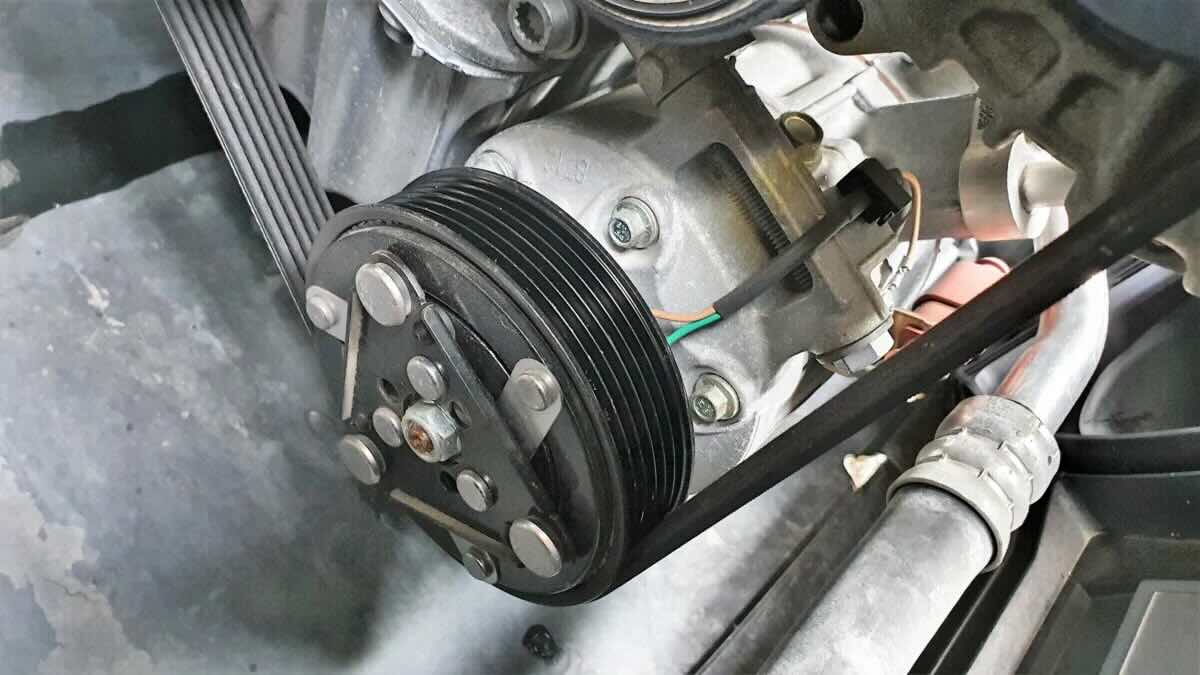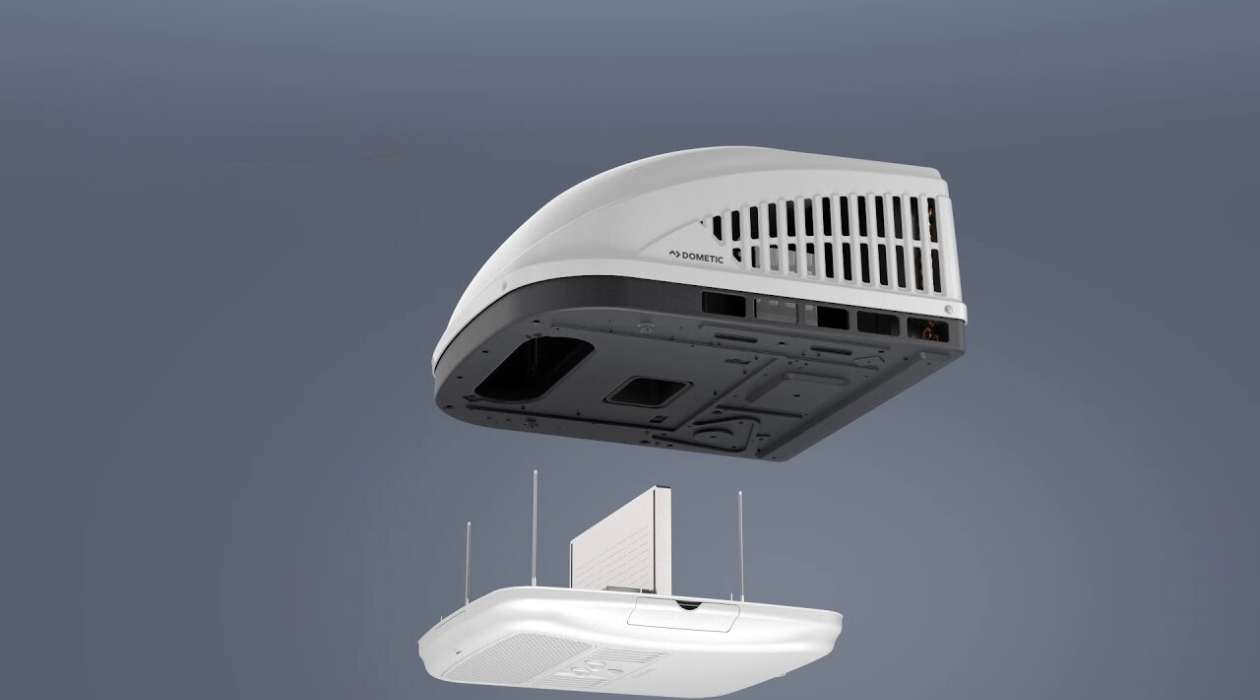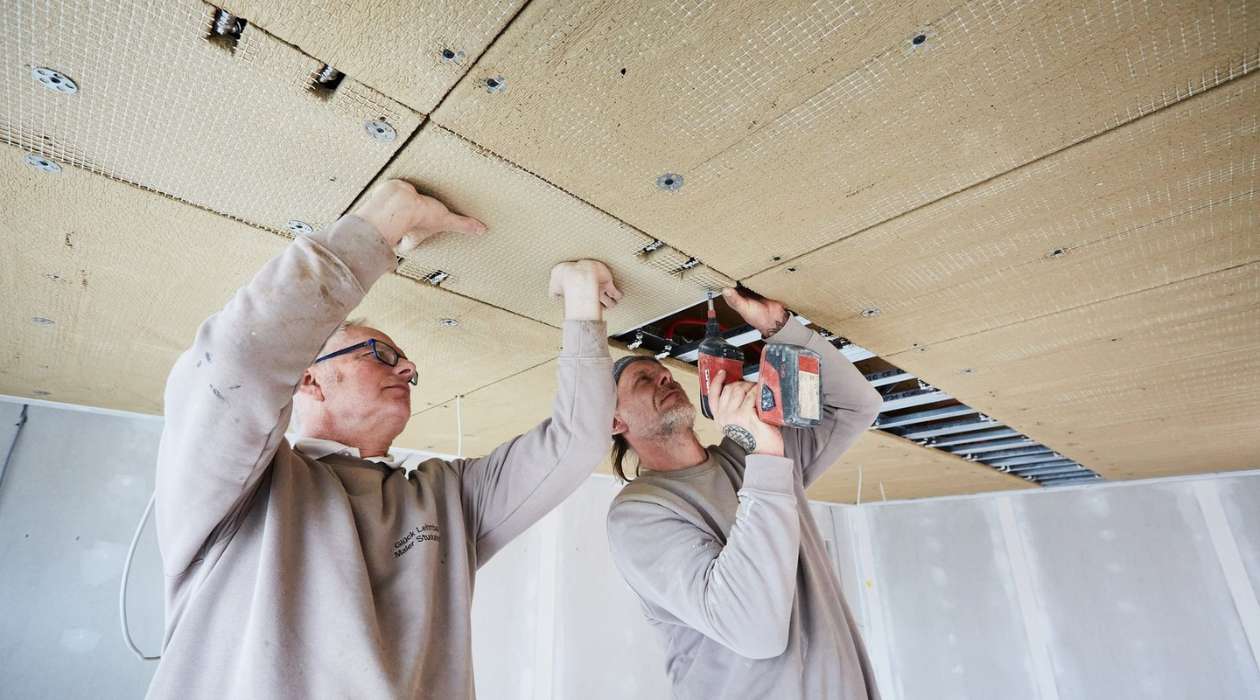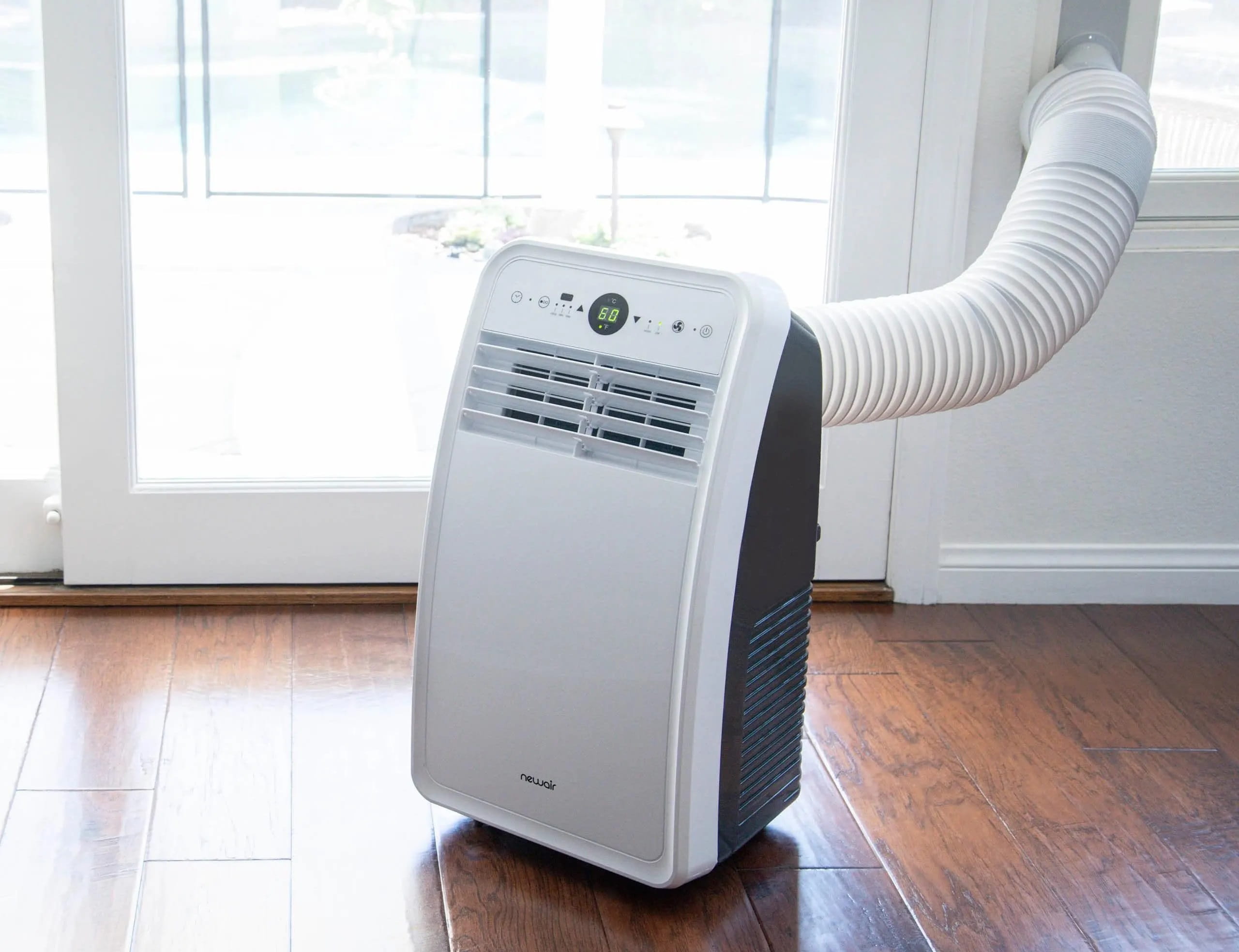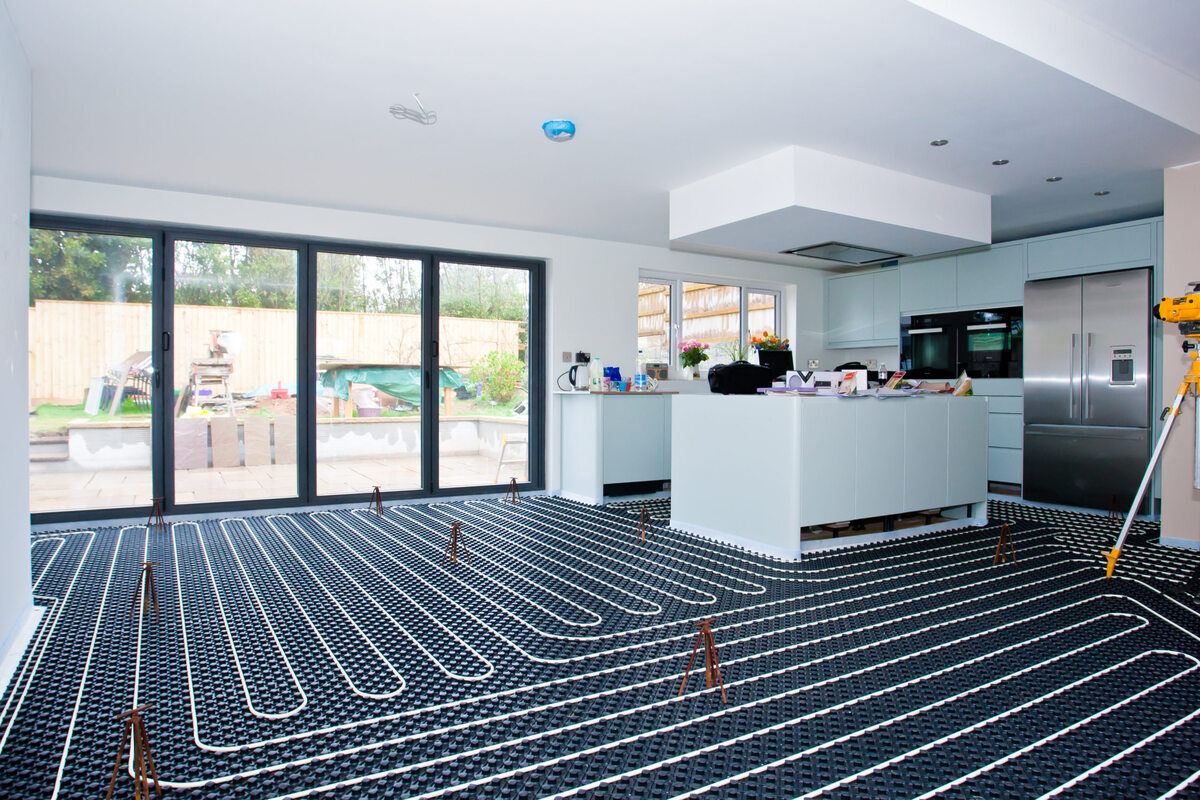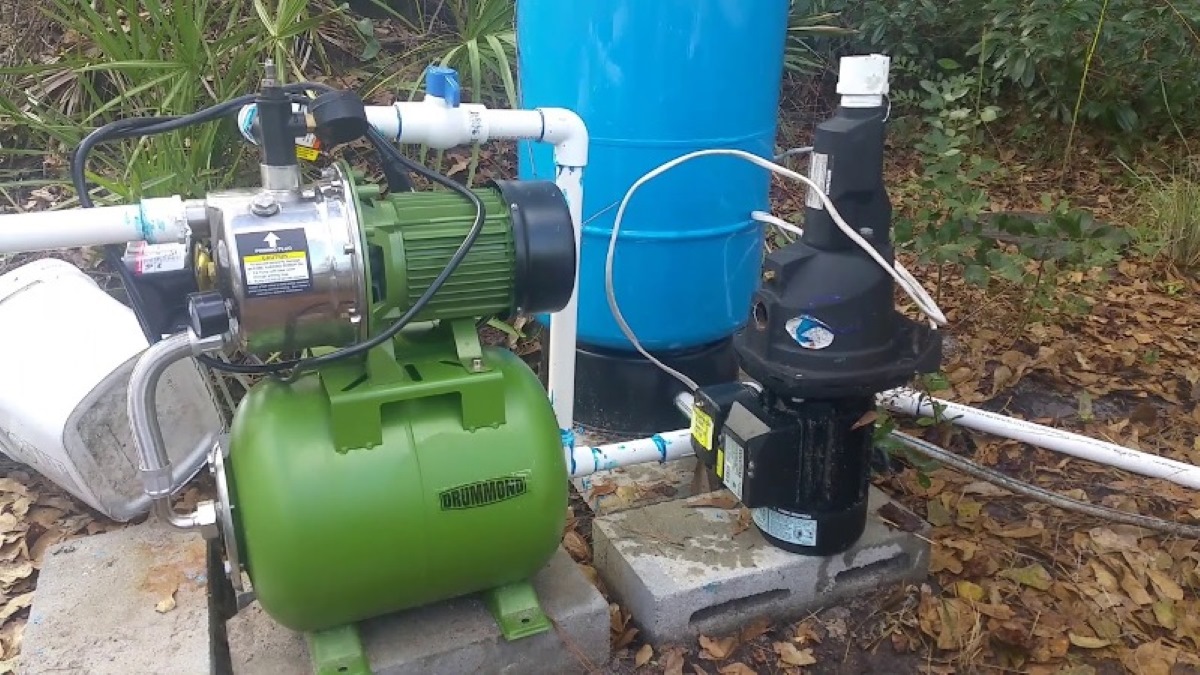Home>Home Maintenance>How Does A Heat Pump Air Conditioner Work?
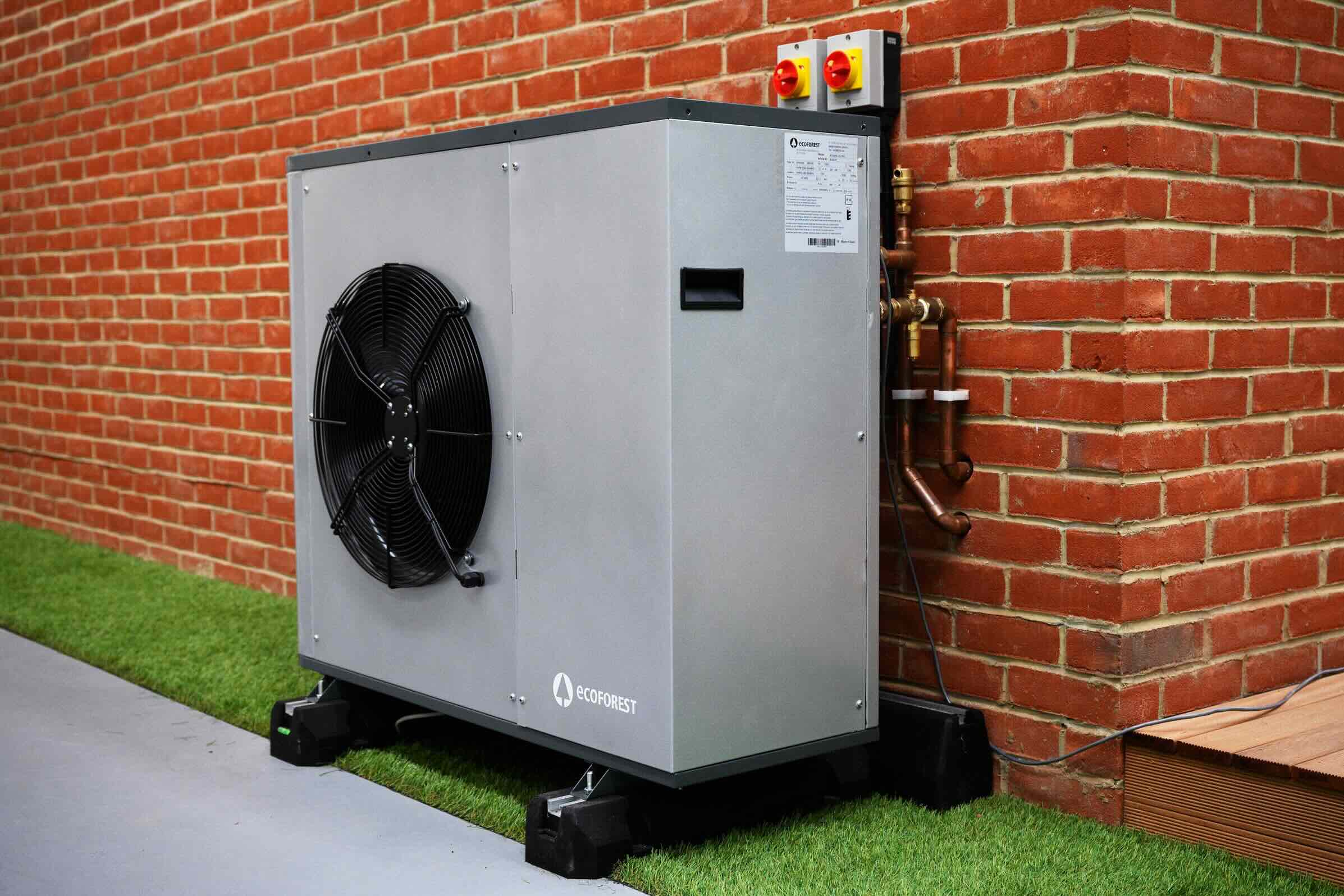

Home Maintenance
How Does A Heat Pump Air Conditioner Work?
Modified: March 7, 2024
Learn how a heat pump air conditioner works to keep your home cool and comfortable. Discover the benefits of this energy-efficient home maintenance solution.
(Many of the links in this article redirect to a specific reviewed product. Your purchase of these products through affiliate links helps to generate commission for Storables.com, at no extra cost. Learn more)
Introduction
A heat pump air conditioner is a versatile and energy-efficient solution for cooling and heating your home. It operates on the principle of transferring heat from one area to another, making it an effective alternative to traditional air conditioning systems. In this article, we will explore the inner workings of a heat pump air conditioner, how it cools and heats a room, and the advantages and limitations of using this technology.
Heat pump air conditioners are gaining popularity due to their ability to provide both cooling and heating functions in one unit. This makes them ideal for year-round comfort and energy savings. Unlike conventional air conditioners that rely solely on refrigerant to cool the indoor air, heat pump air conditioners utilize a reverse refrigeration cycle to extract heat from the outside air and transfer it indoors during cold seasons.
In the following sections, we will delve into the basic components of a heat pump air conditioner, its cooling and heating processes, and the benefits and drawbacks of using this system. By understanding its inner workings, you will be better equipped to make informed decisions regarding the installation and maintenance of a heat pump air conditioner in your home.
Key Takeaways:
- Heat pump air conditioners transfer heat to cool or warm your home, saving energy and providing year-round comfort. They’re like magic wands for your home’s temperature!
- While heat pump air conditioners are efficient and versatile, they may need extra help in extreme temperatures and require professional installation and maintenance.
Read more: How Does An Air Conditioner Work?
What is a heat pump air conditioner?
A heat pump air conditioner, often referred to as a “heat pump,” is a type of HVAC (Heating, Ventilation, and Air Conditioning) system that is designed to both cool and heat a space. It works by transferring heat from one place to another, utilizing the principles of refrigeration. Unlike traditional air conditioners or heaters that generate heat or cool air, a heat pump simply moves heat energy from one location to another.
The basic operation of a heat pump air conditioner is similar to that of a refrigerator. It consists of two main components: an indoor unit and an outdoor unit. The indoor unit is responsible for dispersing conditioned air into the room, while the outdoor unit houses the compressor and the heat exchange coils.
During the cooling process, the heat pump air conditioner extracts heat from inside the room and transfers it outside, resulting in a cool, comfortable indoor environment. This is achieved by circulating a refrigerant, which is a special fluid that can change between states of gas and liquid at low and high temperatures. The refrigerant absorbs heat energy from the indoor air and carries it to the outdoor unit, where it is released into the surrounding environment.
When winter arrives and the temperatures drop, a heat pump air conditioner can reverse its operation to provide warmth. It does this by extracting heat energy from the outdoor air, even in cold weather, and transferring it indoors. The refrigerant absorbs heat from the outdoor unit and carries it to the indoor unit, where it is used to warm the air before being circulated into the room.
Heat pump air conditioners are known for their energy efficiency because they do not rely solely on electrical resistance heating to generate heat. Instead, they utilize the heat energy already present in the environment, making them much more energy-efficient compared to traditional heating systems. This results in cost savings on energy bills and reduced environmental impact.
Overall, a heat pump air conditioner is a versatile and efficient solution for maintaining a comfortable indoor climate year-round. By harnessing the power of heat transfer, it can provide both cooling and heating functions, making it a cost-effective and environmentally friendly choice for homeowners.
The basic components of a heat pump air conditioner
A heat pump air conditioner consists of several key components that work together to provide efficient cooling and heating. Understanding these components will give you insights into how the system operates and help you troubleshoot any potential issues. Here are the basic components of a heat pump air conditioner:
- Compressor: The compressor is the heart of the heat pump system. It is responsible for pumping the refrigerant through the system, increasing its pressure and temperature. The compressor is typically housed in the outdoor unit and is driven by an electric motor.
- Evaporator coil: The evaporator coil is located in the indoor unit and is responsible for absorbing heat from the indoor air during the cooling process. As the refrigerant passes through the evaporator coil, it evaporates, absorbing heat energy and leaving the indoor air cooler.
- Condenser coil: The condenser coil is located in the outdoor unit and plays a crucial role in the heat transfer process. After absorbing heat from the indoor air, the refrigerant is sent to the condenser coil, where it releases the heat to the outdoor air. The refrigerant condenses back into a liquid state as it gives off heat.
- Expansion valve: The expansion valve is a small device located between the evaporator and condenser coils. Its purpose is to regulate the flow of refrigerant into the evaporator coil, controlling the cooling or heating process. The expansion valve lowers the pressure of the refrigerant, allowing it to expand and evaporate in the evaporator coil.
- Refrigerant: The refrigerant is a special fluid that circulates throughout the heat pump system, absorbing and releasing heat energy at different stages. Commonly used refrigerants include R-410A and R-22. The refrigerant undergoes phase changes from gas to liquid and back to gas as it absorbs and releases heat. It is crucial for efficient heat transfer in the system.
- Air handler: The air handler is the part of the indoor unit responsible for distributing conditioned air into the room. It consists of a fan, blower, and air filter. The air handler pushes the cool air during the cooling process and the warm air during the heating process into the ductwork, ensuring consistent airflow throughout the space.
- Ductwork: The ductwork is a network of channels that distributes the conditioned air throughout your home. It carries the heated or cooled air from the air handler to various rooms and returns the air back to the heat pump system for further conditioning.
These components work in harmony to transfer heat energy, providing cooling during hot weather and warmth during cold weather. By understanding the key components of a heat pump air conditioner, you can better appreciate the complexity of the system and maintain its performance through regular maintenance and troubleshooting.
How does a heat pump air conditioner cool a room?
A heat pump air conditioner cools a room by removing heat from the indoor air and transferring it to the outdoor environment. The process involves a series of steps that work together to create a cool and comfortable indoor environment. Here’s how a heat pump air conditioner cools a room:
- Refrigerant circulation: The process begins with the circulation of the refrigerant. The refrigerant, typically a fluid like R-410A or R-22, flows through the system in a continuous cycle, absorbing and releasing heat energy at different stages.
- Evaporation: The refrigerant enters the evaporator coil, which is located in the indoor unit. The evaporator coil contains the cool, low-pressure refrigerant. As warm indoor air passes over the evaporator coil, the refrigerant absorbs the heat from the air and evaporates, transitioning from a liquid to a gas.
- Heat absorption: As the refrigerant evaporates, it absorbs heat from the indoor air, leading to a decrease in temperature and humidity inside the room. This is similar to how sweat evaporating from our skin cools us down.
- Compressor action: The gaseous refrigerant, now carrying the absorbed heat energy, is sent to the compressor, which is located in the outdoor unit. The compressor plays a crucial role in the cooling process. It pressurizes the refrigerant, increasing its temperature and energy.
- Condensation: The hot, high-pressure refrigerant enters the condenser coil in the outdoor unit, where it releases the absorbed heat to the outdoor air. The refrigerant condenses back into a liquid state as it gives off heat, preparing for the next cycle.
- Expansion and repeat: After condensation, the liquid refrigerant passes through an expansion valve, which lowers its pressure. This expansion allows the refrigerant to cool down as it enters the evaporator coil in the indoor unit, and the cycle starts again.
As the heat pump air conditioner continues this cycle, it continuously removes heat from the indoor air, cooling the room. The cool air is then distributed through the ductwork by the air handler, providing a comfortable living or working environment.
It’s important to note that unlike traditional air conditioning systems, which rely solely on electrical resistance to cool the air, heat pump air conditioners use the heat transfer process to achieve cooling. This makes them more energy-efficient and environmentally friendly.
In summary, a heat pump air conditioner cools a room by absorbing heat from the indoor air through evaporation, then transferring that heat outdoors via condensation. This continuous cycle allows the heat pump to provide efficient and effective cooling to keep your space comfortable during hot weather.
Tip: A heat pump air conditioner works by transferring heat from inside to outside in the summer for cooling, and from outside to inside in the winter for heating. It uses refrigerant to absorb and release heat, making it an energy-efficient option for both cooling and heating your home.
How does a heat pump air conditioner heat a room?
A heat pump air conditioner can also provide heating, making it a versatile and efficient option for year-round comfort. It can extract heat energy from the outdoor air, even in cold weather, and transfer it indoors to warm your space. Here’s how a heat pump air conditioner heats a room:
- Reversing the refrigeration cycle: Unlike in cooling mode, where the heat pump air conditioner extracts heat from the indoor air, in heating mode, the system reverses the refrigeration cycle to extract heat energy from the outdoor air.
- Refrigerant circulation: The process starts with the circulation of the refrigerant, which acts as the heat transfer medium. The refrigerant absorbs and releases heat energy as it moves through the system, facilitating the heat transfer process.
- Absorbing heat from outdoor air: The heat pump air conditioner’s outdoor unit contains the evaporator coil. During heating mode, the fan in the outdoor unit draws in the cold outdoor air. The cold refrigerant in the evaporator coil absorbs heat energy from the outdoor air, causing the refrigerant to evaporate and transform into a gas.
- Compressor action: The gaseous refrigerant, now carrying the absorbed heat energy, flows to the compressor located in the outdoor unit. The compressor pressurizes the refrigerant, increasing its temperature and energy level.
- Condensation: The heated, high-pressure refrigerant then enters the condenser coil in the indoor unit. As the refrigerant passes through the condenser coil, it releases the heat energy it absorbed from the outdoor air, allowing the refrigerant to condense back into a liquid state.
- Heat distribution: The heat energy that was released in the condenser coil is now used to warm the indoor air. The air handler in the indoor unit contains a blower that circulates the warm air through the ductwork and into the rooms of your home.
Throughout this process, a heat pump air conditioner can extract heat energy from the outdoor air even when temperatures are low, making it an efficient heating solution. The system continuously cycles refrigerant, extracting heat from the outdoor air and distributing it indoors to provide warmth.
It’s worth noting that heat pump air conditioners are typically more efficient in heating mode than traditional electrical resistance heaters. This is because they are not generating heat through electrical resistance, but rather transferring heat energy from the environment. As a result, heat pump air conditioners can be a cost-effective and energy-efficient option for heating your home.
In summary, a heat pump air conditioner heats a room by utilizing the reverse refrigeration cycle, extracting heat from the outdoor air and transferring it indoors. This process allows the system to provide efficient and reliable heating, ensuring your space remains warm and cozy even during colder months.
Read more: How Does A Ductless Air Conditioner Work
The advantages of using a heat pump air conditioner
Heat pump air conditioners offer numerous advantages, making them a popular choice for homeowners. Whether you are looking to upgrade your current cooling system or considering a new installation, here are some key benefits of using a heat pump air conditioner:
- Energy efficiency: One of the primary benefits of a heat pump air conditioner is its energy efficiency. Unlike traditional heating and cooling systems that generate heat or cold air, heat pumps simply transfer heat energy from one location to another. This process requires less energy, resulting in lower energy bills and reduced environmental impact.
- Heating and cooling in one unit: Heat pump air conditioners provide both cooling and heating functions in one unit. This eliminates the need for separate heating and cooling systems, saving space and installation costs. Furthermore, having a single system allows for easy switching between heating and cooling modes, providing year-round comfort.
- Consistent indoor temperature: Heat pump air conditioners are designed to maintain a consistent indoor temperature, eliminating the uncomfortable temperature fluctuations often experienced with traditional systems. They continuously regulate the heating or cooling process to keep your space comfortable throughout the year.
- Cost-effective heating: Heat pumps are known for their cost-saving benefits, particularly in heating mode. Since they rely on extracting heat energy from the outdoor air, they can provide up to 4 times more heat energy than the electrical energy they consume. This high efficiency translates into significant cost savings, especially during colder months.
- Environmentally friendly: By using heat transfer rather than relying solely on electricity to generate heat, heat pump air conditioners are more environmentally friendly than traditional heating systems. They consume less energy and produce lower greenhouse gas emissions, contributing to a greener and more sustainable living environment.
- Improved indoor air quality: Heat pump air conditioners come with built-in air filtration systems, which help improve indoor air quality. These filters capture dust, pollen, and other particles, reducing allergens and pollutants in the air. This can greatly benefit individuals with respiratory conditions or allergies.
- Longer lifespan: Heat pump air conditioners are built to last, with a typical lifespan of 15-20 years when properly maintained. This longevity can provide peace of mind and ensure consistent performance for many years, saving you money on frequent replacements.
- Year-round comfort: Whether it’s the peak of summer or the depths of winter, heat pump air conditioners provide year-round comfort. With their ability to cool and heat, they can maintain the desired temperature in your home regardless of the season, ensuring optimal comfort for you and your family.
With their energy efficiency, versatility, cost savings, and environmental benefits, heat pump air conditioners are a smart choice for home cooling and heating. They offer a range of advantages that enhance comfort, save money, and contribute to a sustainable lifestyle.
The limitations of using a heat pump air conditioner
While heat pump air conditioners offer many advantages, it’s important to be aware of their limitations as well. Understanding the potential drawbacks will help you make an informed decision when considering the installation of a heat pump air conditioner. Here are some of the limitations to keep in mind:
- Cold temperature performance: Heat pump air conditioners extract heat energy from the outdoor air to warm your home. However, as temperatures drop, the supply of available heat energy decreases. In extremely cold climates, heat pump efficiency can be reduced, and supplemental heating may be required.
- Initial cost: Heat pump air conditioners can have a higher upfront cost compared to traditional air conditioning systems. The cost is influenced by factors such as the size of your home, the complexity of the installation, and the specific features and efficiency rating of the unit. However, it’s important to consider the long-term savings in energy bills that can offset the initial investment.
- Requires professional installation: Proper installation is crucial to the performance and efficiency of a heat pump air conditioner. It requires a trained and experienced HVAC professional to ensure the correct sizing, placement, and proper connection of the unit. Improper installation can result in reduced efficiency or performance issues.
- Ductwork requirements: Heat pump air conditioners typically rely on ductwork to distribute conditioned air throughout your home. If your home does not have existing ductwork, the installation of a heat pump air conditioner may require additional expenses associated with ductwork installation or alternative solutions like ductless mini-split systems.
- Noisy operation: Like any HVAC system, heat pump air conditioners can produce some noise during operation. The level of noise depends on various factors, including the quality of the unit and its placement. If noise is a concern, consider choosing a heat pump air conditioner with noise-reducing features or consulting with a professional to determine the best placement for noise reduction.
- Limitations in extreme climates: In areas with extreme climates, where temperatures can be extremely hot or cold, heat pump air conditioners may have reduced efficiency or need additional support from supplemental heating or cooling systems. It’s important to choose a heat pump with adequate performance specifications for your specific climate conditions.
- Maintenance requirements: Heat pump air conditioners require regular maintenance to ensure optimal performance and efficiency. This includes cleaning or replacing filters, inspecting and cleaning coils, and checking refrigerant levels. Proper maintenance helps prevent issues and prolongs the lifespan of the unit.
- Limited effectiveness for large spaces: Heat pump air conditioners are typically more effective in smaller to medium-sized spaces. In larger spaces, multiple heat pump units may be required to adequately heat or cool the area. It’s important to consider the square footage and layout of your space when determining the suitability of a heat pump air conditioner.
Despite these limitations, heat pump air conditioners remain a popular and efficient choice for heating and cooling. Understanding these limitations will help you manage expectations, make informed decisions, and maximize the benefits of your heat pump air conditioning system.
Conclusion
Heat pump air conditioners are a versatile and efficient solution for cooling and heating your home. They operate on the principles of heat transfer, extracting heat from the indoor air during cooling and extracting heat from the outdoor air during heating. This allows them to provide year-round comfort and energy savings.
The basic components of a heat pump air conditioner include a compressor, evaporator coil, condenser coil, expansion valve, refrigerant, air handler, and ductwork. These components work together to transfer heat energy, providing efficient and effective cooling and heating for your space.
Some of the advantages of using a heat pump air conditioner include its energy efficiency, dual heating and cooling functions, consistent indoor temperature, cost-effective heating, environmental friendliness, improved indoor air quality, longer lifespan, and year-round comfort.
However, it’s important to consider the limitations of heat pump air conditioners as well. These limitations include reduced efficiency in extreme cold temperatures, initial cost, the need for professional installation, potential noise during operation, the requirement for ductwork, limitations in extreme climates, maintenance requirements, and limited effectiveness for large spaces.
Overall, heat pump air conditioners offer a range of benefits and can be an excellent choice for home cooling and heating. If properly maintained and installed, they can provide efficient and reliable performance while saving energy and reducing environmental impact. Consider your specific needs, climate conditions, and budget when deciding whether a heat pump air conditioner is the right option for you.
Remember to consult with a qualified HVAC professional to assess your home’s specific requirements and determine the most suitable heat pump air conditioning system for your needs. With their expertise and your understanding of the system, you can create a comfortable and energy-efficient environment in your home year-round.
Frequently Asked Questions about How Does A Heat Pump Air Conditioner Work?
Was this page helpful?
At Storables.com, we guarantee accurate and reliable information. Our content, validated by Expert Board Contributors, is crafted following stringent Editorial Policies. We're committed to providing you with well-researched, expert-backed insights for all your informational needs.
